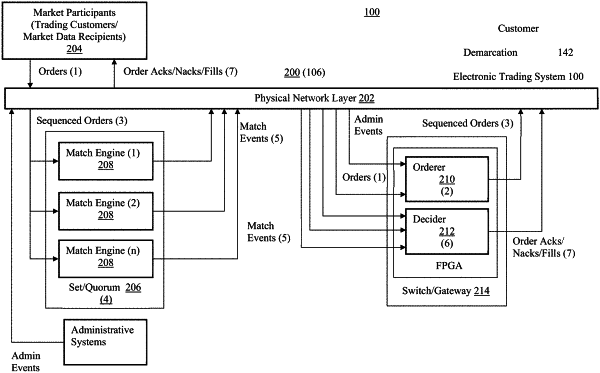| CPC G06Q 40/04 (2013.01) | 32 Claims |

|
1. A system comprising: a logic component and a non-transitory memory coupled therewith having computer readable instructions stored therein configured to cause the logic component to:
determine a particular prior state of an electronic marketplace to be reproduced, wherein the particular prior state comprises a cumulative result of processing of incoming transactions previously received by the electronic marketplace over a prior period of time;
retrieve a subset of data previously stored in the memory representative of at least a subset of the incoming transactions previously received by the electronic marketplace over a specified prior period of time for execution thereby, the processing of each of which causes a change in at least an intermediate state of the electronic marketplace, for which sequential processing of at least a subset thereof would cumulatively result in reproduction of the particular prior state;
identify a pattern of two or more subsets of transactions of the retrieved subset of data which indicate that the particular prior state would be reproduced by the retrieved subset of data;
accumulate data indicative of subsequently received transactions in a memory coupled with the logic component, wherein the memory has a capacity to store a limited number of received transactions such that, after the capacity of the memory has been reached, as a new transaction is received, the data indicative thereof is stored in the memory in place of the data indicative of the oldest transaction stored therein; and
compare, periodically, the currently accumulated data with the identified pattern to detect when at least a portion of the identified pattern occurs.
|